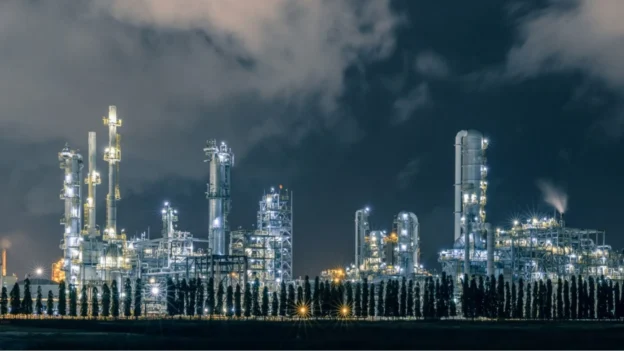Phillips 66 confirmed that its refinery located in Los Angeles will not receive any more crude oil shipments. The last water-soluble shipment was offloaded on September 30, and the final processing of the crude oil is expected to be completed by the end of the year. crude oil is expected to be completed around October 16.
Operations and imports at Phillips 66 Refinery in LA
As part of this planned shutdown, the company has begun to progressively shut down various process units, focusing especially on those related to the production of gasoline production. The goal is to complete the total shutdown of the facilities by the end of 2025.
In addition, the company has intensified its fuel import operations, sourcing fuel from other West Coast regions as well as international markets. The fuel will be transported by pipeline to its Torrance facility and then redistributed through its local network and other systems such as Kinder Morgan.
Phillips 66 refinery in LA: schedule, costs and transition
The reconversion of the industrial complex includes an environmental remediation program with an estimated cost of US$70 million, focused mainly on groundwater mitigation. In addition, a US$30 million expense will be incurred for the retirement of transportation assets that will cease to operate as a result of the closure.
Despite the decommissioning process at the Los Angeles refinery Los Angeles refineryPhillips 66 has reiterated its commitment to the continued supply of gasoline in California, assuring that the market will not be affected by its availability. Future actions include the adaptation of existing port docile facilities to increase the capacity to receive imports.
The financial detail of these movements will be further elaborated in the next third quarter earnings conference call, scheduled for October 29.
A new operating model
According to company spokespersons, California is gradually adopting a model similar to that of the U.S. East Coast, where the demand for fuel demand is mostly supplied by imports. fuel demand is mostly supplied by imports. In this context, it is expected that external refineries will adapt their production to comply with CARB (California Air Resources Board) standards, which are fundamental in the California market.
Phillips 66 has already begun this process from its plant in Ferndale, Washington, which could dedicate 10-15% of its production to CARB gasoline as demand requires.
The future of the Los Angeles site envisions a long-term redevelopment, the initial phases of which are under development, as part of a corporate strategy focused on sustainable industrial land use.
Source: Phillips 66
Photo: Shutterstock

